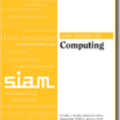Data-driven algorithms can adapt their internal structure or parameters to inputs from unknown application-specific distributions, by learning from a training sample of inputs. Several recent works have applied this approach to problems in numerical linear algebra, obtaining significant empirical gains in performance. However, no theoretical explanation for their success was known. In this work we prove generalization bounds for those algorithms, within the PAC-learning framework for data-driven algorithm selection proposed by Gupta and Roughgarden (SICOMP 2017). Our main results are closely matching upper and lower bounds on the fat shattering dimension of the learning-based low rank approximation algorithm of Indyk et al.~(NeurIPS 2019). Our techniques are general, and provide generalization bounds for many other recently proposed data-driven algorithms in numerical linear algebra, covering both sketching-based and multigrid-based methods. This considerably broadens the class of data-driven algorithms for which a PAC-learning analysis is available.
翻译:由数据驱动的算法可以通过从培训投入样本中学习,使其内部结构或参数适应来自未知的具体应用分布的投入。最近的一些工作对数值线性代数问题采用了这一方法,取得了显著的实绩经验。然而,尚没有对其成功作出理论解释。在这项工作中,我们证明,在Gupta和Robgarden提出的数据驱动算法选择PAC学习框架(SICOMP 2017)范围内,这些算法为这些算法提供了一般化的界限。我们的主要结果与Indyk等人(NeurIPS 2019)基于学习的低级近似算法(NeurIPS 2019)的脂肪粉碎尺寸紧密匹配。我们的技术是一般性的,为最近提议的数值线性代数中许多其他数据驱动算法提供了一般化界限,涵盖草图和多网基方法。这大大扩大了数据驱动算法的类别,可以进行PAC学习分析。



